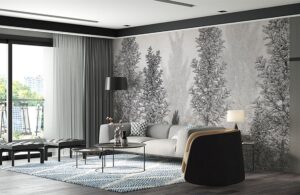
If structural changes are needed (such as removing walls, moving plumbing or adding windows), an interior designer is usually a better choice. However, some decorators with formal schooling can work on structural projects just as well as designers.
In either case, it’s important to hire a pro who has experience in all aspects of design. That way, you know that you’ll get a quality design every time.
Interior Design
Decorators tend to focus on surface appearances, meaning they may paint or bring in new furniture but they can’t alter the structure of a room. This makes them an ideal choice for spaces that don’t require renovation or construction.
Interior designers have formal training and education, often with a bachelor’s degree in design or a closely related field. They also have expertise in space planning, product selection and building codes and regulations. They work with a variety of professionals, including architects, builders and contractors, to execute the design.
Interior designers research and analyze their clients’ needs, goals and preferences in order to create functional and attractive living environments that meet their client’s lifestyles within a building or fixed space. They make a point of ensuring their designs are aesthetically pleasing and comply with building codes and safety regulations. They also draft technical drawings and coordinate with construction teams to carry out the project. This can include anything from floor plans and layouts to product specifications and material selection. They use their experience to develop a design concept that is both cost-effective and functional, while considering environmental sustainability.
Space Planning
Space planning is the process of determining how a room or group of rooms will be used. It is generally done as part of the building design process, or can be undertaken as a stand alone exercise. It involves separating activities into different spaces and considering how these will relate to each other. It also considers the physical limitations of the space, such as its height and width.
The goal of effective space planning is to create a functional layout that meets the client’s needs. This requires careful consideration of the client’s needs and requirements, as well as the principles of good design. It is also important to take into account the dimensions of the space and the size of furniture that will be placed in it.
Space planning can be applied to both residential and commercial spaces. In the case of a commercial space, it is necessary to determine the goals and needs of the business. This will help to ensure that the right amount of space is available for each type of activity.
Budgeting
Decorators focus on decorating, or changing the appearance of a space. They don’t do structural changes, such as removing walls or rerouting plumbing or electrical wiring, but rather work with painters, furniture makers, upholsterers and other professionals. They work directly with clients to decide on a style, choose a color scheme and bring in new furnishings.
It’s important for both designers and clients to be upfront about the budget from the get-go, so there are no surprises down the road. It’s also helpful to break down the project and list everything it will entail, along with costs for each item. This allows you to keep track of what is being spent and make any necessary adjustments, says Surmelis.
Be sure to include labor costs, survey costs, shipping costs and other unforeseen expenses, which can add up quickly. And don’t forget to set aside a percentage of your budget for things going wrong. For example, if the to-die-for dining room table ends up costing more than your allotted amount, you can downsize the chairs to hit your number.
Visualization
Visualization is the ability to represent abstract concepts through a visual image. This process has been a way of communicating ideas since the dawn of humanity, through cave drawings and even Leonardo da Vinci’s graphical innovations.
Decorators, on the other hand, focus purely on the aesthetic and help clients transform existing spaces that they can’t change structurally. This may include sprucing up a room with paint or furniture, or even moving walls around. They are also responsible for sourcing art, lighting and other elements that will make the space unique.
Choosing a professional based on their skills and experience, rather than the job title, is important. While it’s a good idea to choose a designer for any space planning or structural changes, there are many decorators who have gained design skills through long experience and can work just as well with contractors and builders as any other designers. This can be a win-win for both parties.
Project Management
Design project management is the process of organizing your team’s collaboration and ensuring that all deliverables are met on time and within budget. It involves setting up processes, distributing tasks to the right people and scheduling meetings with your team. It also includes monitoring all aspects of a project, from planning the initial phases to final delivery.
Decorators, on the other hand, don’t have the same responsibilities as designers. They work with homeowners or business managers and don’t work directly with contractors or architects. They may partner with furniture makers, upholsterers or painters, but their primary focus is on enhancing the appearance of existing spaces.
It’s important to note that whether or not you’re a designer or a decorator, both roles require good communication and planning. It’s crucial to set up meeting schedules that keep everyone on the same page and ensure that no one is wasting their time. Using tools like ClickUp’s project planning tools can help with this. In addition, regular check-ins are crucial to prevent frustration between teams. These are great times to review milestones, discuss any issues that came up and decide on a plan for moving forward.







